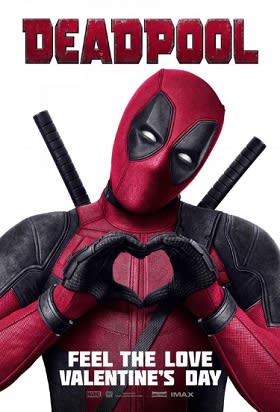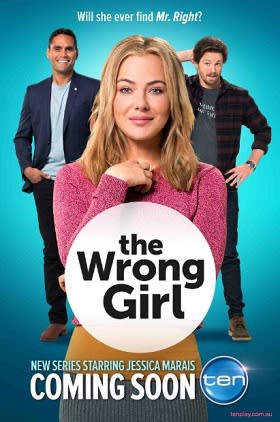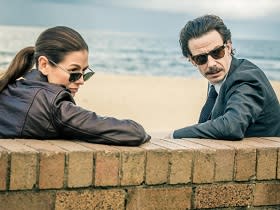How can social media promote films and TV shows?
Film production companies and TV networks are increasingly using social media platforms to market their movies and shows to younger, web-savvy audiences who consume much less traditional media.
By Alina Kay 29 Dec 2016

Film production companies and TV networks are increasingly using social media platforms to market their movies and shows to younger, web-savvy audiences who consume much less traditional media.
One of the most successful recent social media marketing campaigns was for 20th Century Fox’s action movie Deadpool, produced by and starring Ryan Reynolds, which ended up nominated for best integrated marketing campaign at the Clio Key Art Awards this year.
Deadpool’s budget was a relatively low $60m so the marketing campaign played with the potential of free social media coverage to create a slew of viral successes, all of which helped the film to a record-breaking global box-office haul of more than $782m. The film is now the most successful R-rated (with heightened swearing, sexual content and violence) movie of all time.
The campaign for Deadpool involved uploading social media content on a daily basis between the launches of the film’s first and second trailers.
Content was often improvised on the day by the film’s production team and from Reynolds – who was also a producer on the movie – and ranged from viral videos shot on Reynolds’ phone and email newsletters, to GIFs, custom Deadpool emojis and even a Tinder profile created for the chara cter.
Reynolds was a major element of the marketing campaign, constantly engaging with fans in character through his social media channels.
The similarly R-rated animated movie Sausage Party – a comedy about sentient food discovering the horrors of the kitchen – also used an extensive social media marketing campaign which led to international box-office of $140m from a production spend of just $19m. It was Sony’s largest digital marketing campaign to date, dedicating half of the marketing budget to social media. It resulted in over 50% of the cinemagoers being the film’s target audience of under 25.
The goal of Sausage Party’s marketing campaign was to make sharable content. But another reason for the heavy focus on social media, similar to Deadpool, was that the film’s strong language made traditional advertising channels problematic.

Sausage Party’s marketing team made prolific use of Seth Rogen, a co-star in the movie, as well as a credited producer and co-writer. He appeared in popular YouTube series, filmed prank videos for Facebook and appeared in specially-created content for Snapchat.
Social media promotion can also extend to television and has been used extensively to raise brand awareness for Australian TV shows The Wrong Girl and Deep Water.
“The idea of providing Twitter interactivity for Australian drama programming was new, and we had to be sure that we were enriching the narrative experience rather than distracting from it,” says Mike Cowap, multiplatform investment manager at Screen Australia, in comments to KFTV.
“We also wanted it be more than advertising – it had to be standalone mini drama content.
“Both titles were new brands, so they had the uphill battle of trying to get an audience to tune in, let alone follow them on Twitter.”
The Wrong Girl is an Australian drama series following the life and career of the producer of a morning TV show. The main part of the social media marketing campaign was the Twitter-only webisodes Alice’s World, which gave the audience the impression they had caught the characters off guard. There were also bonus scenes, post-episode question and answer sessions, online real-time events and video chats.
Deep Water (pictured below), on the other hand, is an Australian crime drama series based on the real-life murders of dozens of gay men in Sydney’s eastern suburban beaches in the 1970s and 1980s. Social media content built on the show’s plot with extra story and character details.
The series main character behaved as if the investigation was happening live and was ongoing over the show’s four episodes. The Deep Water Twitter account supplied extra clues and evidence to supplement what was on air without spoiling the plot. The villain turned out to be unexpected and fans engaged on social media by providing their own theories about the plot.
“The Twitter content went above and beyond what was on screen and had the audience on the edge of their seat (and iPhones!) for all four episodes,” says Cowap.

“At a time when people often prefer to time-shift their viewing, to get the ratings and Twitter activity that they did, SBS (the TV network) really knocked it out of the park, especially considering they are our smallest public broadcaster.”
According to data supplied by SBS, the Twitter hashtag #DeepWater trended as the second most-used in Australia during the first episode.
Jennie Sager is Twitter’s director of entertainment for the Asia-Pacific region and echoes the view that Twitter allows TV shows and films to target audiences much more precisely than traditional marketing. In addition, the price is much lower than conventional advertising.
“Globally, people are turning to Twitter for news, whether that's entertainment news or hard news. You can target exactly who you want to reach with Twitter campaigns. It's far more targeted than traditional media with far greater reach and its advertisements are a fraction of the price. This ensures more eyeballs on your content, with the added benefit that if your content is good, your reach will be expanded via retweets and embeds.
“Content is the key to success. If you have high-quality content, your marketing campaign will work. That means interesting video or GIFs/photos to show what you are marketing.”
Traditional film advertising, such as trailers, banners, and offline campaigns still certainly play a huge role in promoting films and TV shows. But as social media use continues to grow and streaming services become more prevalent, social media promotion is challenging traditional advertising to become the primary marketing path for future TV programmes and films alike.
Deadpool image: 20th Century Fox. The Wrong Girl image: TEN. Deep Water image: Sean O'Reilly/SBS
Deadpool’s budget was a relatively low $60m so the marketing campaign played with the potential of free social media coverage to create a slew of viral successes, all of which helped the film to a record-breaking global box-office haul of more than $782m. The film is now the most successful R-rated (with heightened swearing, sexual content and violence) movie of all time.
The campaign for Deadpool involved uploading social media content on a daily basis between the launches of the film’s first and second trailers.
Content was often improvised on the day by the film’s production team and from Reynolds – who was also a producer on the movie – and ranged from viral videos shot on Reynolds’ phone and email newsletters, to GIFs, custom Deadpool emojis and even a Tinder profile created for the chara cter.
Reynolds was a major element of the marketing campaign, constantly engaging with fans in character through his social media channels.
The similarly R-rated animated movie Sausage Party – a comedy about sentient food discovering the horrors of the kitchen – also used an extensive social media marketing campaign which led to international box-office of $140m from a production spend of just $19m. It was Sony’s largest digital marketing campaign to date, dedicating half of the marketing budget to social media. It resulted in over 50% of the cinemagoers being the film’s target audience of under 25.
The goal of Sausage Party’s marketing campaign was to make sharable content. But another reason for the heavy focus on social media, similar to Deadpool, was that the film’s strong language made traditional advertising channels problematic.

Sausage Party’s marketing team made prolific use of Seth Rogen, a co-star in the movie, as well as a credited producer and co-writer. He appeared in popular YouTube series, filmed prank videos for Facebook and appeared in specially-created content for Snapchat.
Social media promotion can also extend to television and has been used extensively to raise brand awareness for Australian TV shows The Wrong Girl and Deep Water.
“The idea of providing Twitter interactivity for Australian drama programming was new, and we had to be sure that we were enriching the narrative experience rather than distracting from it,” says Mike Cowap, multiplatform investment manager at Screen Australia, in comments to KFTV.
“We also wanted it be more than advertising – it had to be standalone mini drama content.
“Both titles were new brands, so they had the uphill battle of trying to get an audience to tune in, let alone follow them on Twitter.”
The Wrong Girl is an Australian drama series following the life and career of the producer of a morning TV show. The main part of the social media marketing campaign was the Twitter-only webisodes Alice’s World, which gave the audience the impression they had caught the characters off guard. There were also bonus scenes, post-episode question and answer sessions, online real-time events and video chats.
Deep Water (pictured below), on the other hand, is an Australian crime drama series based on the real-life murders of dozens of gay men in Sydney’s eastern suburban beaches in the 1970s and 1980s. Social media content built on the show’s plot with extra story and character details.
The series main character behaved as if the investigation was happening live and was ongoing over the show’s four episodes. The Deep Water Twitter account supplied extra clues and evidence to supplement what was on air without spoiling the plot. The villain turned out to be unexpected and fans engaged on social media by providing their own theories about the plot.
“The Twitter content went above and beyond what was on screen and had the audience on the edge of their seat (and iPhones!) for all four episodes,” says Cowap.

“At a time when people often prefer to time-shift their viewing, to get the ratings and Twitter activity that they did, SBS (the TV network) really knocked it out of the park, especially considering they are our smallest public broadcaster.”
According to data supplied by SBS, the Twitter hashtag #DeepWater trended as the second most-used in Australia during the first episode.
Jennie Sager is Twitter’s director of entertainment for the Asia-Pacific region and echoes the view that Twitter allows TV shows and films to target audiences much more precisely than traditional marketing. In addition, the price is much lower than conventional advertising.
“Globally, people are turning to Twitter for news, whether that's entertainment news or hard news. You can target exactly who you want to reach with Twitter campaigns. It's far more targeted than traditional media with far greater reach and its advertisements are a fraction of the price. This ensures more eyeballs on your content, with the added benefit that if your content is good, your reach will be expanded via retweets and embeds.
“Content is the key to success. If you have high-quality content, your marketing campaign will work. That means interesting video or GIFs/photos to show what you are marketing.”
Traditional film advertising, such as trailers, banners, and offline campaigns still certainly play a huge role in promoting films and TV shows. But as social media use continues to grow and streaming services become more prevalent, social media promotion is challenging traditional advertising to become the primary marketing path for future TV programmes and films alike.
Deadpool image: 20th Century Fox. The Wrong Girl image: TEN. Deep Water image: Sean O'Reilly/SBS
Latest news & features
Featured profiles
Promote your services with KFTV
Choose from three profile types - Basic, Silver and Gold
Create ProfileWe offer a range of display advertising opportunities.
Learn More